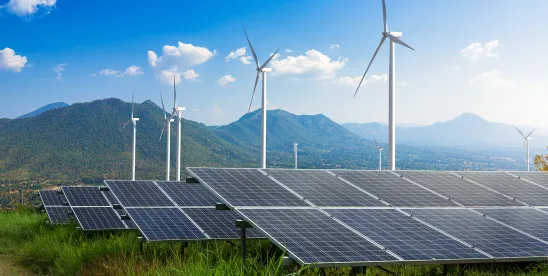Treasury and the IRS today released guidance, Notice 2025-42 (the “Notice”), regarding what constitutes beginning of construction for solar and wind energy projects with respect to the production tax credit under Section 45Y of the Code (the “PTC”) and Section 48E of the Code (the “ITC”).
Under the One Big Beautiful Bill Act (the “OBBBA”), which we previously described here, solar and wind facilities are eligible for the PTC or ITC only if placed in service by the end of 2027. There is an exception to this deadline for projects on which construction begins before the one-year anniversary of enactment of the OBBBA. An Executive Order issued on July 7 by President Trump, described here, required Treasury to adopt more stringent beginning of construction rules for wind and solar facilities. The Notice was issued in response to the OBBBA changes and the Executive Order.
Prior beginning of construction guidance (related to the PTC and ITC predecessor Code Sections 45 and 48, respectively) provided two ways for a taxpayer to begin construction on a solar or wind project. The taxpayer could either show that they (i) began physical work of a significant nature (the “Physical Work Test”), or (ii) paid or incurred at least 5% of the total cost of the eligible facility (the “5% Safe Harbor”). The Physical Work Test does not consider the amount of work or its cost but only focuses on the nature of the work performed being significant. Further, both off-site (including the manufacture of non-inventory components) and on-site work (including digging foundations, and the installation of eligible equipment) may be taken into account for purposes of the Physical Work Test. Historical guidance also included a continuity requirement that required taxpayers to continue construction of an eligible project after construction had begun. Under prior guidance, the continuity requirement was deemed to be satisfied if the applicable project was placed in service by the end of the fourth calendar year after the year in which construction began (the “Continuity Safe Harbor”)
Following are several high-level takeaways from the Notice:
- The Physical Work Test is largely preserved, and both off-site and on-site physical work of a significant nature still count toward meeting the Physical Work Test.
- The four-year Continuity Safe Harbor is preserved. This means, by way of example, that if construction of an eligible project begins in 2025, the taxpayer will satisfy the continuity requirement so long as the project is placed in service by the end of 2029.
- The 5% Safe Harbor has been eliminated, except for “low output solar facilities,” which is defined to mean a solar facility with a maximum net output of not greater than 1.5 megawatts. New rules related to “integrated operations” apply for purposes of measuring output.
- The Notice applies only to solar and wind facilities, so to the extent beginning of construction rules are relevant to other technologies seeking the PTC or ITC, the prior guidance should continue to apply.
- No retroactive application. One concern that taxpayers had was with respect to potential retroactive application; this did not come to fruition. The Notice applies for projects on which construction did not begin before September 2, 2025.





 />i
/>i

